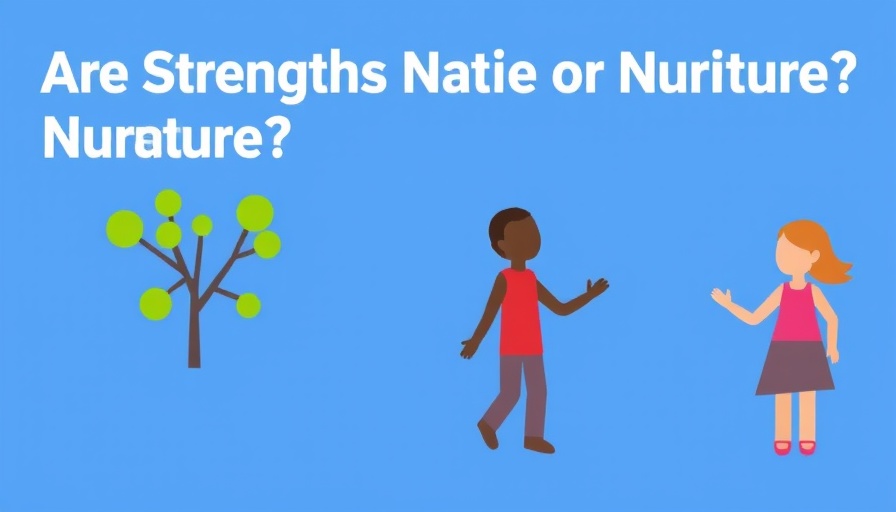
Understanding the Origins of Strengths
The debate over whether strengths are an innate part of our personality (nature) or shaped by our environments and experiences (nurture) is longstanding and essential, especially for those in educational leadership positions. Research suggests that while genetics may play a role in our inherent talents, the way these strengths are cultivated through life experiences, education, and encouragement cannot be understated. For teachers and education leaders, understanding this balance is crucial in developing students' potential.
The Power of Environment in Shaping Strengths
Environment plays a significant role in the development of strengths. Children exposed to supportive adults—whether parents, teachers, or mentors—are more likely to develop their skills confidently. For instance, a child who is encouraged in their artistic abilities often blossoms into a talented artist, while another who might excel in mathematics but lacks encouragement may never realize their potential. This nurturing aspect highlights the need to foster a positive and growth-oriented environment in educational settings.
The Genetic Component: Are Strengths Pre-Determined?
While nurturing is crucial, there's evidence to suggest a genetic basis for certain strengths. Studies in behavioral genetics indicate that traits like creativity and analytical thinking can have hereditary links. Thus, while one may be more predisposed to certain strengths, the environment plays a pivotal role in their expression and development. Recognizing this can empower teachers to look for latent talents in their students and adapt their teaching methods accordingly.
Application in Classroom Strategies
For educators, how can this understanding of strengths as either nature or nurture be translated into effective classroom strategies? Leveraging strengths-based approaches in the classroom can lead to more engaged learners. This could be achieved by offering varied activities that allow students to exhibit their strengths, providing feedback that emphasizes their unique abilities, and creating opportunities for peer interactions where students can learn from each other's strengths.
Real-World Implications: Success Stories in Nurturing Strengths
Success stories abound in educational contexts where strengths have been recognized and nurtured. For example, many schools have adopted the Gallup StrengthsFinder program, aiming to identify students' strengths early on. The result? A notable increase in student confidence, academic performance, and overall satisfaction with school. These programs reinforce the idea that strengths, whether naturally occurring or nurtured, significantly contribute to a student's educational journey.
Future Trends: Evolving Perspectives on Strengths
Looking ahead, education policies and practices continue to evolve. The increasing focus on personalized education suggests a shift towards strength-based learning methodologies. Schools are beginning to realize the value of individualized learning plans that focus on each student's abilities, further affirming that understanding both nature and nurture is essential in maximizing student potential.
Concluding Thoughts: The Balance of Strengths
The dynamic interplay between nature and nurture in developing strengths is a nuanced topic that warrants attention in the field of education. As educators, recognizing this interplay allows us to craft learning environments that embrace and develop innate talents while fostering new ones. The journey to building a strengths-based future for students begins with acknowledging both aspects and committing to their growth.
As we seek to empower our students, let us embrace this balanced perspective, advocating for policies and practices that nurture strengths in every learner. Together, we can shape a future where every child not only discovers their strengths but also learns to maximize them.
 Add Row
Add Row  Add
Add 




 Add Row
Add Row  Add
Add 

Write A Comment